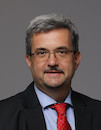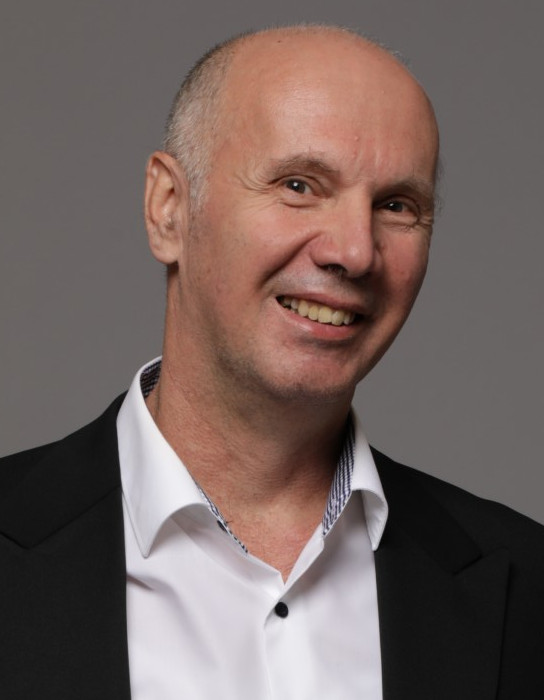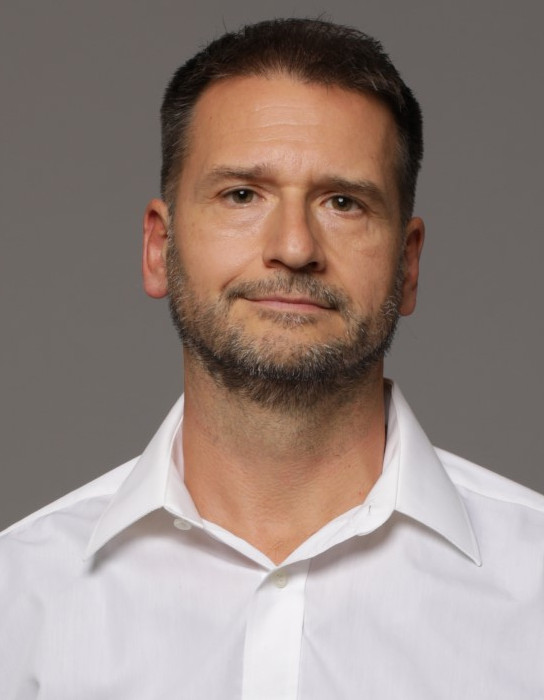Microwave Networks and Circuits
Data is displayed for academic year: 2023./2024.
Course Description
Transmission lines: microstrip line, stripline. Coaxial line. One-port and multi-port microwave networks, impedance, admittance, transmission and scattering matrices, signal flow graphs. Two-port networks: attenuator, ferrite isolator, phase shifter. Three-port networks: circulator, power dividers. Four-port networks: directional couplers and hybrids. Microwave resonators and filters. Microwave semiconductor devices: PIN diode, varactor diode, Schottky diode, bipolar transistor, HBT, MOSFET, MESFET, HEMT. Microwave amplifiers: power gain definitions, stability, amplifier design for specified gain and noise figure. Microwave oscillators: Gunn oscillator, transistor oscillator, injection-locking, phase noise. Mixer, mixing.
Study Programmes
University graduate
[FER3-EN] Control Systems and Robotics - profile
Elective course
(3. semester)
[FER3-EN] Electrical Power Engineering - profile
Elective courses
(1. semester)
(3. semester)
Learning Outcomes
- analyze networks and circuits with distributed parameters
- explain the operation and application of multi-port microwave circuits
- design microstrip transmission lines and circuits consisting of such lines
- explain operation principles and applications of microwave semiconductor devices
- design simple active microwave circuits with semiconductor elements
- explain the operation of the microwave oscillator
- explain the principles of frequency synthesis
- explain the principles of mixing and frequency conversion
Forms of Teaching
Lectures
Lectures present theoretical concepts, existing mathematical models and examples from practice.
ExercisesClassroom exercises allow the application of concepts from lectures in solving practical examples.
Independent assignmentsIndependent tasks deepen understanding and develop independence in solving practical problems.
LaboratoryThe laboratory complements the development of problem-solving skills through self-contained and team solving of more complex problems.
Grading Method
| Continuous Assessment | Exam | |||||
|---|---|---|---|---|---|---|
| Type | Threshold | Percent of Grade | Threshold | Percent of Grade | ||
| Laboratory Exercises | 50 % | 0 % | 0 % | 0 % | ||
| Mid Term Exam: Written | 0 % | 25 % | 0 % | |||
| Final Exam: Written | 50 % | 25 % | ||||
| Final Exam: Oral | 50 % | |||||
| Exam: Written | 50 % | 50 % | ||||
| Exam: Oral | 50 % | |||||
Comment:
--
Week by Week Schedule
- Port and reference plane. One-port network. Impedance. Foster's reactance theorem. Two-port and multi-port networks. Impedance and admittance matrices (Z-, Y-parameters). Power waves, scattering parameters. Transmission matrix (ABCD-parameters). Reciprocal network, matched network, lossless network.
- Quarter-wave impedance transformer. Coaxial transmission line. Stripline, microstrip line.
- Signal flow graphs. Graph decomposition. Mason's rule. Two-port networks (attenuator, ferrite isolator, phase shifter).
- Three-port networks (ferrite circulator, T-junction, resistive power divider, Wilkinson power divider).
- Directions coupler (symmetrical and asymmetrical). Waveguide and transmission line couplers, hybrids. Quadrature hybrid, 180° hybrid, even and odd mode analysis.
- Serial and parallel resonant circuit, quality factor and bandwidth. Transmission line resonators, cavity resonators, dielectric resonators. Excitation of resonators. Coupling with external circuits.
- Filter synthesis. Maximally flat response filters. Equal-ripple response filters. Elliptic function filters. Impedance and frequency scaling. Richard's transformation. Kuroda's identities. Microwave filter prototypes.
- Midterm exam
- PIN diode. Varactor diode. Schottky diode. Gunn element. Microwave avalanche diodes. Microwave bipolar transistors, HBT. Microwave field effect transistors, MOSFET, MESFET, HEMT.
- Power gain definitions. Amplifier stability, stability circles. Unilateral amplifier, unilateral figure of merit. Amplifier design for specified gain. Amplifier design for specified noise figure.
- Collpits and Hartley oscillator circuits. Voltage controlled oscillator. Crystal oscillators. Oscillators with one-port device (Gunn oscillator). Microwave transistor oscillators.
- Injection locking. Oscillator phase noise.
- Direct frequency synthesizers. Phase-locked loop frequency synthesizers. Digital look-up frequency synthesizers.
- Mixer circuits, analysis and design of mixers.
- Final exam
Literature
Juraj Bartolić (2011.), Mikrovalna elektronika, Graphis, Zagreb
D. Bonefačić, R. Zentner (2010.), Mjerenja u mikrovalnoj elektronici, FER
Z. Smrkić (1990.), Mikrovalna elektronika, Školska knjiga
For students
General
ID 222901
Winter semester
5 ECTS
L3 English Level
L1 e-Learning
45 Lectures
0 Seminar
0 Exercises
12 Laboratory exercises
0 Project laboratory
0 Physical education excercises
Grading System
88 Excellent
76 Very Good
66 Good
55 Sufficient


 Pristupačnost
Pristupačnost

